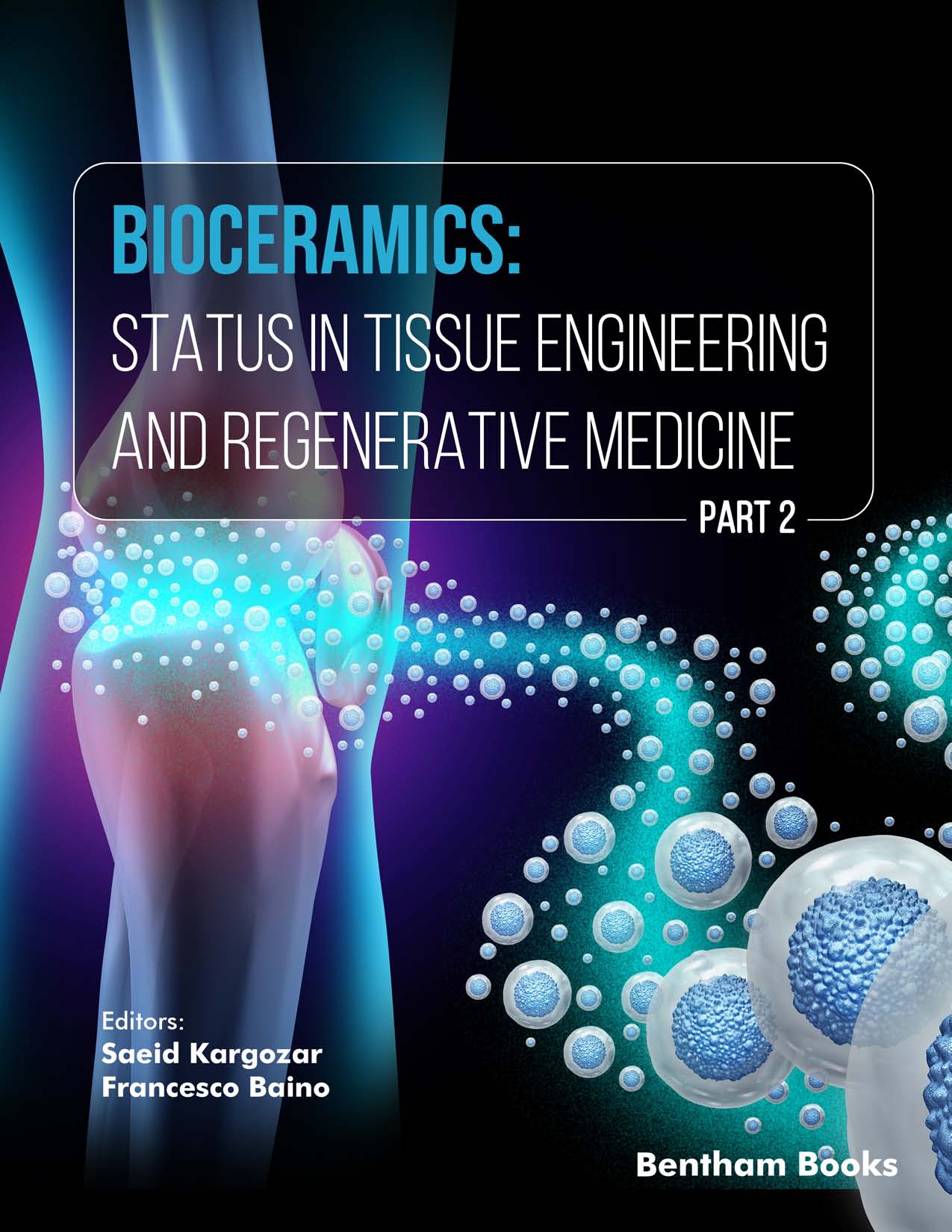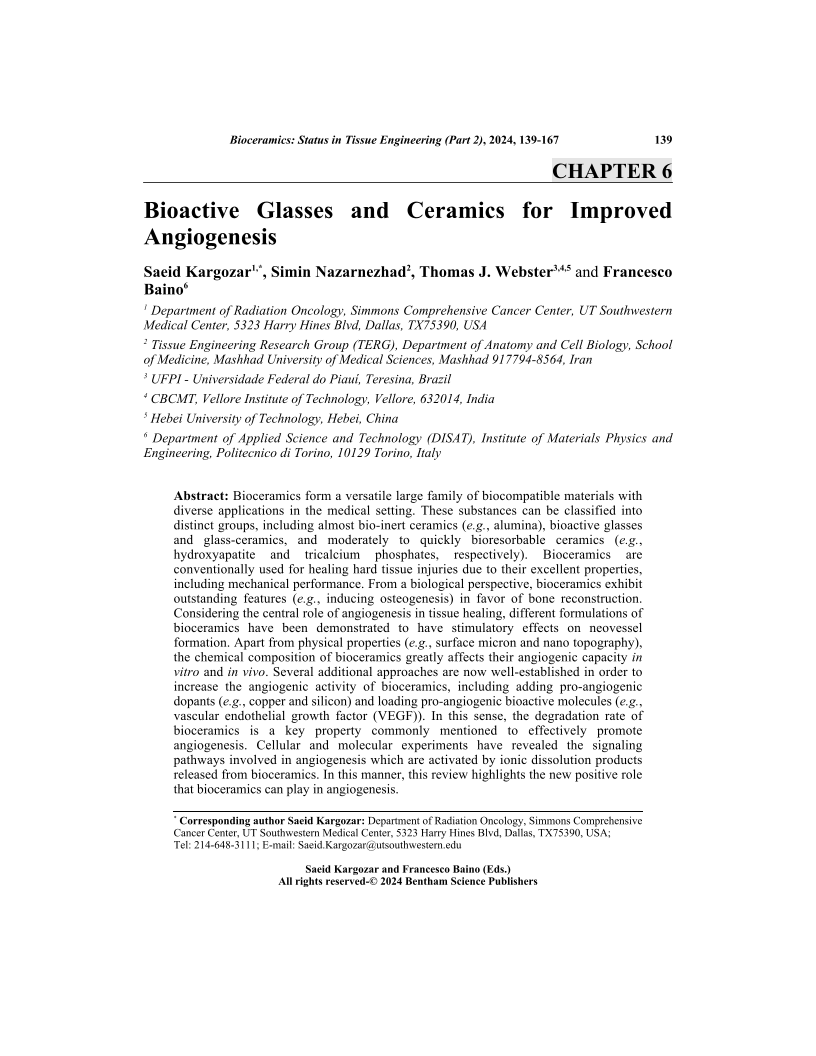Bioactive Glasses and Ceramics for Improved Angiogenesis

- Authors: Saeid Kargozar1, Simin Nazarnezhad2, Thomas J. Webster3, Francesco Baino4
-
View Affiliations Hide Affiliations1 Department of Radiation Oncology, Simmons Comprehensive Cancer Center, UT Southwestern Medical Center, 5323 Harry Hines Blvd, Dallas, TX75390, USA 2 Tissue Engineering Research Group (TERG), Department of Anatomy and Cell Biology, School of Medicine, Mashhad University of Medical Sciences, Mashhad 917794 8564, Iran 3 UFPI - Universidade Federal do Piauí, Teresina, Brazil 4 Department of Applied Science and Technology (DISAT), Institute of Materials Physics and Engineering, Politecnico di Torino, 10129 Torino, Italy
- Source: Bioceramics: Status in Tissue Engineering and Regenerative Medicine (Part 2) , pp 139-167
- Publication Date: December 2024
- Language: English
Bioactive Glasses and Ceramics for Improved Angiogenesis, Page 1 of 1
< Previous page | Next page > /docserver/preview/fulltext/9789815313895/chapter-6-1.gif
Bioceramics form a versatile large family of biocompatible materials with diverse applications in the medical setting. These substances can be classified into distinct groups, including almost bio-inert ceramics (e.g., alumina), bioactive glasses and glass-ceramics, and moderately to quickly bioresorbable ceramics (e.g., hydroxyapatite and tricalcium phosphates, respectively). Bioceramics are conventionally used for healing hard tissue injuries due to their excellent properties, including mechanical performance. From a biological perspective, bioceramics exhibit outstanding features (e.g., inducing osteogenesis) in favor of bone reconstruction. Considering the central role of angiogenesis in tissue healing, different formulations of bioceramics have been demonstrated to have stimulatory effects on neovessel formation. Apart from physical properties (e.g., surface micron and nano topography), the chemical composition of bioceramics greatly affects their angiogenic capacity in vitro and in vivo. Several additional approaches are now well-established in order to increase the angiogenic activity of bioceramics, including adding pro-angiogenic dopants (e.g., copper and silicon) and loading pro-angiogenic bioactive molecules (e.g., vascular endothelial growth factor (VEGF)). In this sense, the degradation rate of bioceramics is a key property commonly mentioned to effectively promote angiogenesis. Cellular and molecular experiments have revealed the signaling pathways involved in angiogenesis which are activated by ionic dissolution products released from bioceramics. In this manner, this review highlights the new positive role that bioceramics can play in angiogenesis.
-
From This Site
/content/books/9789815313895.chapter-6dcterms_subject,pub_keyword-contentType:Journal -contentType:Figure -contentType:Table -contentType:SupplementaryData105

